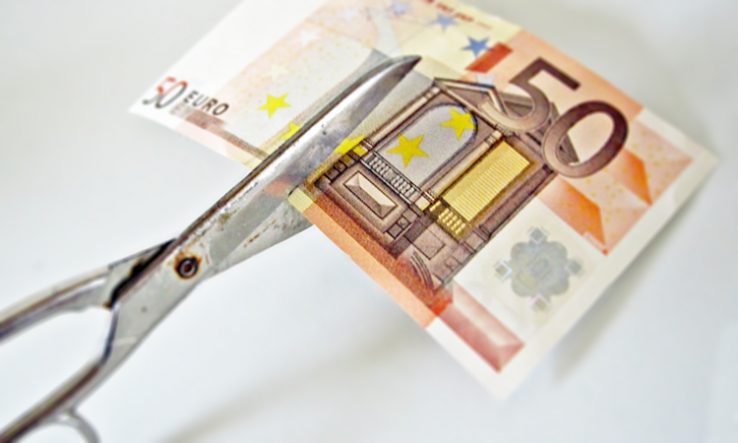
Image: Images Money [CC BY 2.0], via Flickr
The amount of South African research funding from foreign sources dropped in 2016/17 for the first time in over five years, according to the latest spending data.
Foreign-funded R&D dropped by just under R40 million (US$2.7m) from the previous year, to R4.17 billion. By contrast, government- and industry-funded R&D grew by R2bn and R1.5bn respectively.
The proportion of South Africa’s total R&D funding that comes from foreign sources also shrank from 13 per cent to 11.7 per cent. This brings it close to a 10-year low, after reaching 15 per cent in 2011/12.

The insights—which might worry researchers, given South Africa’s stuttering economy—are presented in the 2016/17 South African National Survey of Research And Experimental Development, released on 27 October.
In terms of overall expenditure, the news is better. South Africa’ gross expenditure on R&D grew for the third year in a row as a proportion of its GDP, reaching 0.82 per cent. But there’s still cause for worry, because the three-year rise may not mean much more money for science. The country’s GDP growth rate halved to only 0.6 per cent in the year under review, meaning any gains in research intensity are slight in numerical terms.
In addition, the total GERD increase of R3.4bn to R35.7bn in 2016/2017 becomes much smaller in constant 2010 rand values, the report warns.
“Growth in GERD is slowing down in real terms. The year-on-year change in real GERD was 1.5 percentage points lower that it was in 2015/16,” it states.
In constant 2010 rand terms, spending by business, science councils, and government was largely stagnant compared to 2015/2016, with only the higher education sector significantly growing its expenditure.
While business funding for R&D has increased in rand value, the share of business in total GERD continued its downward trajectory to 41.4 per cent from a high of near 60 per cent in 2007/08.
Higher education contributed most to the 2016/17 increase in GERD, rising to 32.7 per cent—a meteoric rise from the 19.4 per cent of GERD originating from the sector in 2007/08.
Several thematic areas saw a reduction in funding. Biotechnology research expenditure fell by R55m and nanotechnology expenditure fell R18m. Both areas are routinely listed as key areas of focus by the Department of Science and Technology. Engineering science research spending plummeted by R833m.
Good news on training
Despite the somewhat gloomy figures, the survey shows that the country is making good on its human capital promises.
Total full-time equivalent R&D personnel and researchers both rose, while the total headcount increased by nearly 5,000. The number of women researchers climbed to 45.1 per cent, an increase of 0.7 of a percentage point.
There are other positive trends. Research expenditure on tuberculosis, malaria and HIV/Aids research increased by R485m and environmental science research by more than R600m. The chemical sciences saw an increase of R270m while marine science research increased one-and-a-half times.
Dedicated tracking of space research was included in the survey for the first time, netting R633m in 2016/17.
The survey defines three types of research: basic research, which is the acquisition of knowledge without a specific application; applied research, which is knowledge generation for a practical aim; and experimental development, which is the use of existing research and knowledge to produce materials, products or systems.
The report claims that 2016/17 marks the first time that basic research expenditure trumped experimental development. But applied research accounts for almost half of GERD.
Michael Kahn, a policy analyst and professor at Stellenbosch University, said the numbers aren’t as positive as they appear.
“One might also ask whether the steady rise in the share of basic research is appropriate,” he says.
On business R&D, Kahn says that while the increase in funding “looks good”, it is important to look where the increase comes from and what prospects the prospects are for spurring employment growth: “The question arises as to which sub-sector is investing.”
Just under half of business expenditure on R&D was done in the financial services sector, while the manufacturing share of BERD declined.